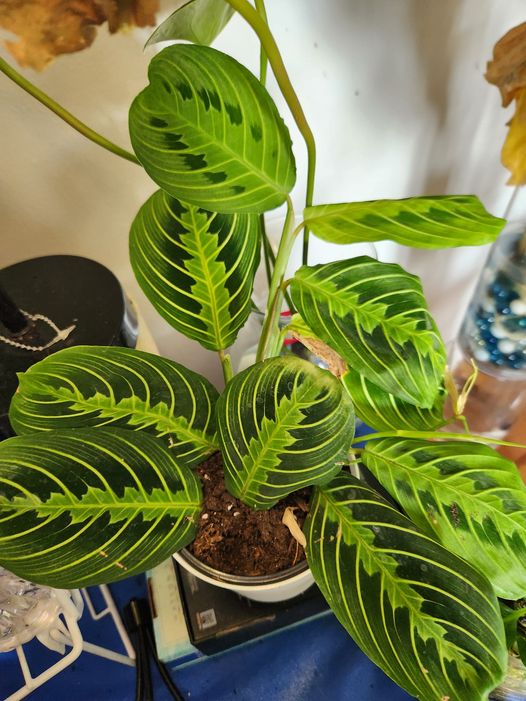
As the frost settles and the days grow shorter, many of us shift our focus from vibrant summer gardens to the cozy corners of our homes. One plant that can bring a touch of tropical warmth to your winter décor is the prayer plant (Maranta leuconeura). Known for its striking foliage and unique leaf movements, the prayer plant requires special care during the winter months to thrive. This guide will walk you through everything you need to know about nurturing your prayer plant through the chilly season, ensuring it remains a lush and vibrant part of your indoor garden.
Understanding the Prayer Plant
What Makes the Prayer Plant Special?
The prayer plant is renowned for its distinctive foliage. Its leaves fold up at night, resembling hands in prayer, which is where it gets its name. During the day, the leaves unfurl, showcasing intricate patterns and vibrant colors. Here’s why it’s a standout choice for your indoor space:
- Unique Leaf Movement: The plant’s ability to move its leaves is a natural response to light and darkness.
- Attractive Foliage: The maroon and green leaves, often with striking patterns, add an exotic touch to any room.
- Air-Purifying Qualities: Like many houseplants, the prayer plant helps improve indoor air quality.
Winter Care Tips for Your Prayer Plant
1. Maintain the Right Temperature
Ideal Temperature Range
Prayer plants thrive in temperatures between 65°F and 75°F (18°C to 24°C). During winter, it’s essential to ensure your plant doesn’t experience sudden temperature drops or extreme cold. Consider these tips:
- Avoid Cold Drafts: Keep the plant away from windows, doors, and vents where cold air can penetrate.
- Maintain Consistent Temperature: Use a room thermometer to ensure your plant is kept within its ideal temperature range.
2. Adjust Light Conditions
Light Preferences
Prayer plants prefer bright, indirect light. During winter, natural light can be limited, so adjust accordingly:
- Supplemental Lighting: Consider using a grow light to provide additional light if your home gets minimal sunlight.
- Avoid Direct Sunlight: While additional light can be beneficial, direct sunlight can scorch the leaves. Position your plant where it receives filtered light.
3. Manage Humidity Levels
Why Humidity Matters
Prayer plants thrive in high humidity environments. Winter’s dry indoor air can be challenging for these tropical beauties. Here’s how to keep the humidity levels in check:
- Humidifiers: Place a humidifier near your plant to maintain optimal moisture levels.
- Pebble Trays: Fill a tray with pebbles and water, then set your plant pot on top. As the water evaporates, it increases humidity around the plant.
- Regular Misting: Lightly mist the plant’s leaves with water to help maintain humidity, but avoid over-wetting the foliage to prevent mold growth.
4. Watering Wisely
How Much Water is Enough?
Winter often means reduced growth and, consequently, a reduced need for water. However, it’s crucial to water your prayer plant correctly:
- Check Soil Moisture: Allow the top inch of soil to dry out before watering. Stick your finger into the soil to gauge moisture levels.
- Avoid Overwatering: Ensure the pot has good drainage and that excess water can escape. Overwatering can lead to root rot, especially in the cooler months.
5. Fertilizing with Care
When and How to Fertilize
During winter, the prayer plant’s growth slows down, so it doesn’t need as much fertilizer:
- Reduce Fertilizer Frequency: Feed your plant once a month using a balanced, water-soluble fertilizer.
- Avoid Over-Fertilizing: Excess fertilizer can harm the plant. Stick to recommended amounts and avoid feeding during periods of dormancy.
6. Pruning and Maintenance
Keeping Your Plant Healthy
Regular pruning and maintenance help keep your prayer plant healthy and visually appealing:
- Prune Dead or Damaged Leaves: Regularly remove any yellow or brown leaves to encourage new growth.
- Check for Pests: Winter can sometimes bring indoor pests. Inspect the plant regularly for signs of infestation and treat as needed.
Common Challenges and Solutions
Dealing with Low Light
Problem: Leaves turning yellow or becoming leggy.
Solution: Increase light levels with supplemental lighting or reposition the plant to a brighter spot.
Handling Dry Air
Problem: Leaf edges turning brown or crispy.
Solution: Increase humidity around the plant through misting, pebble trays, or a humidifier.
Preventing Root Rot
Problem: Moldy soil or musty smell.
Solution: Ensure the pot has proper drainage and reduce watering frequency. Allow the soil to dry out between waterings.
Conclusion
Caring for your prayer plant during winter doesn’t have to be a daunting task. By maintaining the right temperature, managing light and humidity, adjusting watering and fertilizing practices, and performing regular maintenance, you can keep your prayer plant healthy and thriving throughout the colder months. This vibrant, exotic plant can be a bright spot in your winter indoor garden, adding a touch of tropical charm to your home. Embrace these care tips, and your prayer plant will continue to delight with its unique beauty and graceful movements all season long.
